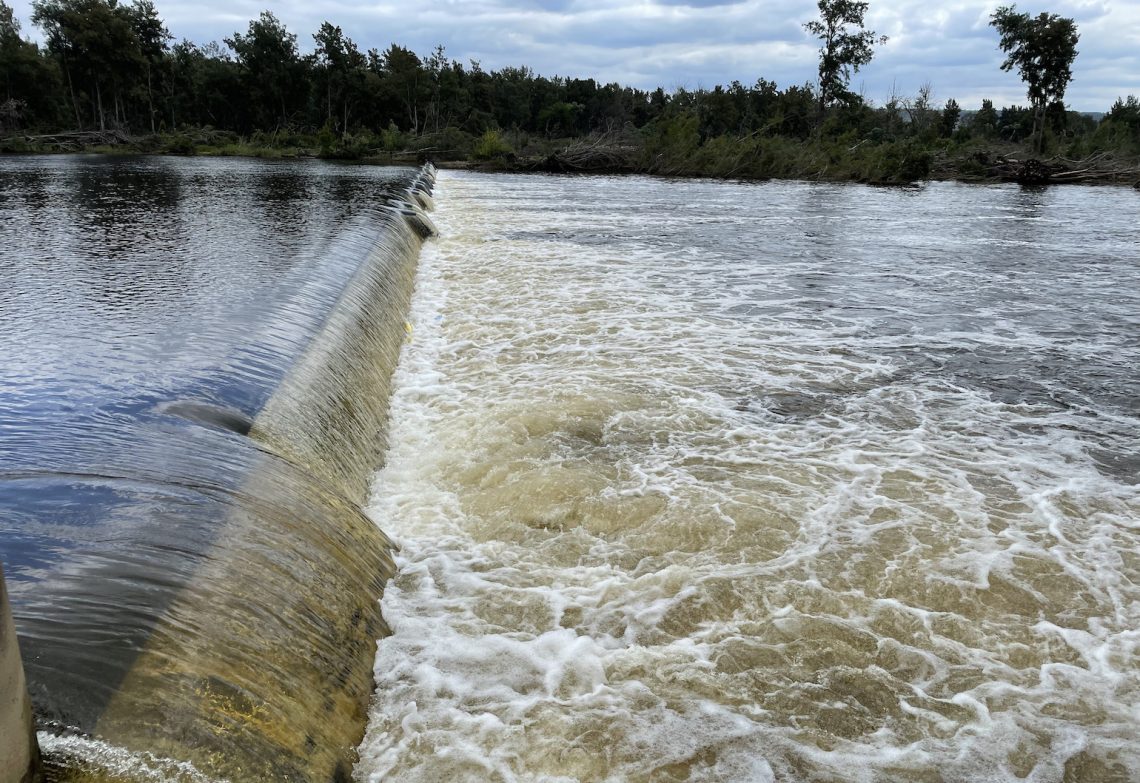Weirs can be as dangerous as a rip at the beach and can present an immediate danger to swimmers and rescuers.
Engineers Australia Fellow and Executive engineer Tony Ladson FIEAust CPEng EngExec has had a long history with weir safety.
“One of my first jobs was in a place called Wangaratta on the Ovens River,” he told create. “I saw a dog get stuck in a weir. Fortunately, somebody managed to grab it by the collar and pull it to safety – but the event stuck with me.”
In the years since, Ladson has taken notice of other fatalities caused by unsafe weirs, including:
- The drowning of eight people at the South Dubbo Weir in the eight decades since it was built.
- The drowning of a 29-year-old man at Dights Falls on the Yarra River in November 2021, the latest in a string of drowning incidents at the weir.
- Most recently, the drowning of a woman in her 30s at Penrith Weir in January 2022.
The series of fatalities led Ladson, who is Director of the consulting company Moroka and an adjunct Associate Professor at Victoria University, to research the causes of and solutions for weir-related drownings and near-drownings.
Part of that research was presented in a paper submitted to the recent Engineers Australia Hydrology & Water Resources Symposium.
“Weirs are often a really unsafe environment,” he said. “And we can do better. So I started to dig up information about how we could build safer weirs, and present the information in an accessible way so people do the right thing.”
The problem
Weirs are built for purposes that include measuring stream flow, developing river aesthetics, and managing upstream water levels for the purposes of water diversion or pumping.
But according to Ladson, certain weirs in Australia are constructed in a way that presents an immediate danger to swimmers and passers-by: an effect called the submerged hydraulic jump.
“A submerged hydraulic jump means that the water on the downstream side of the weir is travelling upstream,” he explained.
Past a certain point, called the boil line, the water flow reverts to normal – but it’s in the reverse-flow section of the weir, or the entrapment zone, where people and objects can become trapped.

“If you happen to go over a weir, it can be quite hard to get out or swim away,” Ladson said. “Even a boat can get stuck, and rescuers are at risk as well.”
He uses the analogy of a rip at the beach – an ostensibly safe section of the water that conceals a hidden risk below the surface.
“Weirs can be much more dangerous than they look,” he said.
The solution
Although not every weir will be life-threatening – indeed, Ladson admits that the hydraulic jump only occurs at certain flow rates – the danger presented by certain weirs is too large to ignore.
Warning signs are a common risk management technique, but as they can be easily damaged or ignored, they aren’t a failsafe solution.
In his symposium paper, Ladson outlines two major engineering interventions to improve weir safety. The first involves retrofitting the weir with a rock ramp, or a kind of sloping rock chute, as has been done at the South Dubbo Weir.
“I favour the rock ramp because they provide fish passage,” he said. “This is important because we’ve built hundreds or even thousands of weirs throughout our river systems, and potentially every one presents a barrier for fish. And Australian fish aren’t particularly good at jumping.”
Secondly, a flip lip spillway acts “like a step” to break the downward flow of water over the lip of a weir.
“This ensures that the water coming over the crest hits the step and continues to flow downstream,” said Ladson. “It eliminates the dangerous backflow that can occur with the overpour by adding a downstream component of flow.”
The only issue he foresees here is that Australian engineers might be “starting from a bit further back” with the flip lip solution.
“I’m not sure that we’ve had a lot of experience with them under Australian conditions,” he said.
A game-changing alternative, Ladson suggests, is to remove weirs entirely.
“Weirs might have served some function when they were built 100 years ago, but if they’re no longer required and no longer used, and I’m sure many of them are now out of date, perhaps we can just get rid of them,” he said.



